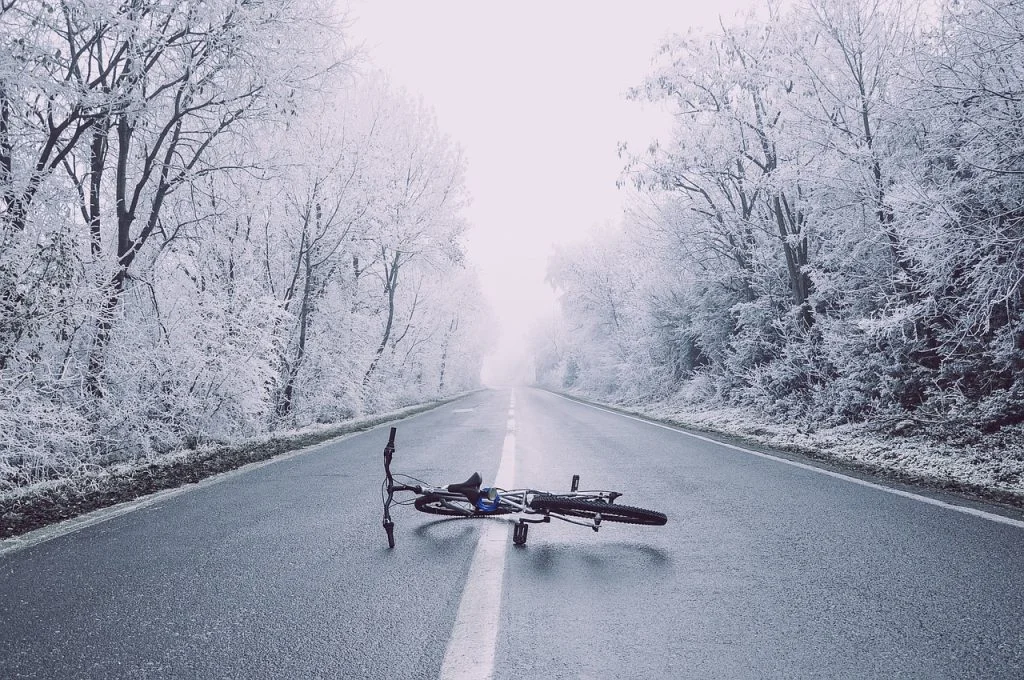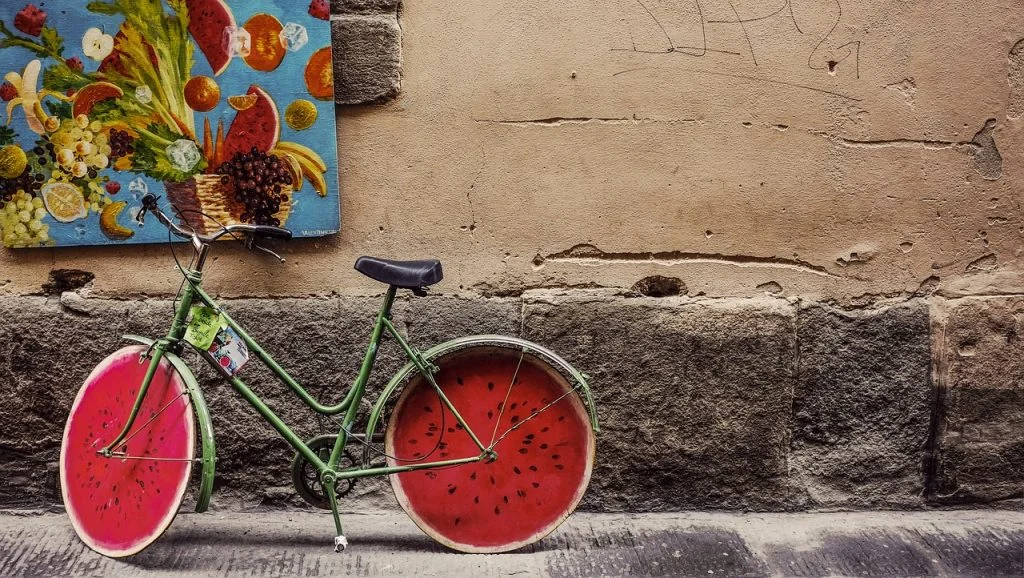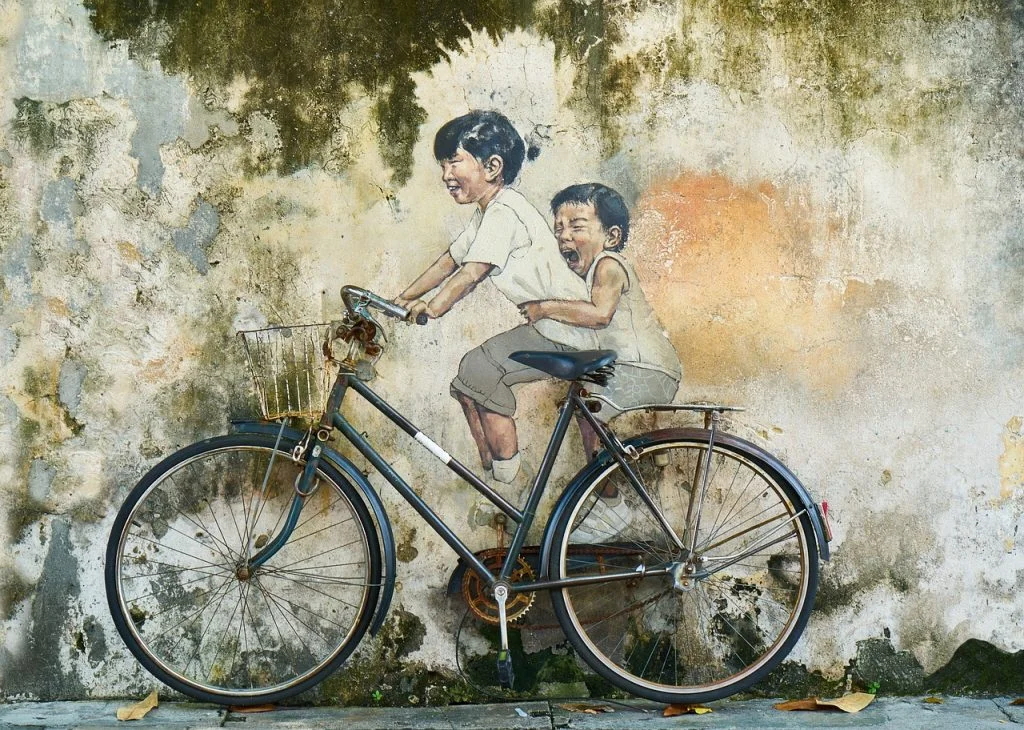Bicycles – those two-wheeled wonders that have been the humble steeds of my many adventures and, occasionally, misadventures. You know, I once believed that bike chains were self-lubricating, a myth busted on a particularly grueling uphill climb when my chain squeaked louder than a mouse at a cat convention.
Have you ever felt the unbridled joy of cycling downhill with the wind as your cheering squad? That’s what got me hooked. My love for bikes began when I was just a small boy, wobbling on my first bike, a bright red little thing with training wheels that I swear were made of adamantium. From there, it was a journey through mountain trails, city streets, and the occasional “oops, that was a one-way” moment.
Life is like riding a bicycle. To keep your balance, you must keep moving.
Albert Einstein
Bike Facts
Welcome to our journey through the fascinating world of bicycles! From their humble beginnings to modern innovations, we’ll explore some epic facts that will pedal you through history. And don’t forget, a quiz awaits at the end of this ride, so keep your eyes on the road and your mind in gear!
- The first bicycle was invented in 1817 by Baron Karl von Drais, known as the “Draisine” or “running machine.”
- Bicycles outnumber cars globally, with over one billion bicycles worldwide.
- The term “bicycle” was first used in France in the 1860s.
- Inner tubes for bicycles were invented by John Boyd Dunlop in 1888, revolutionizing bicycle tires.
- The longest tandem bicycle ever built was almost 67 feet long and seated 35 people.
- Amsterdam, in the Netherlands, is known as the bicycle capital of the world.
- Bicycles are highly efficient in terms of energy consumption, outperforming cars and public transportation.
- Around 100 million bicycles are manufactured worldwide each year.
- The world record for the fastest speed on a bicycle is over 183 mph (295 km/h).
- Bicycles have a positive impact on the environment by reducing carbon emissions and traffic congestion.
- The smallest rideable bicycle ever made had wheels of just 20 millimeters in diameter.
- Riding a bicycle can burn approximately 500 calories per hour.
- Bicycle helmets were not widely used until the 1970s.

- The largest bicycle parade involved over 72,000 cyclists in 2004 in Bangladesh.
- A study showed that commuting by bicycle reduces the risk of heart disease and cancer.
- The first mountain bike race took place in California in 1976.
- Japan has automated underground bicycle storage systems to save space in crowded cities.
- Bicycles influence urban planning, leading to the development of bike lanes and bike-friendly infrastructure.
- Diamond is the most common frame shape for modern bicycles, named after its diamond-like shape.
- The gear system on bicycles was introduced in the late 19th century.
- Bicycle touring became popular in the late 19th century, with people traveling long distances on bikes.
- The first BMX bikes were introduced in the 1970s in Southern California.
- Public bike-sharing programs are increasing in cities worldwide to encourage cycling.
- Bike messengers have been essential for quick deliveries in urban areas since the late 19th century.
- The U.S. Bicycle Hall of Fame was established in 1985 in Davis, California.
- Velodromes, special tracks for racing bikes, became popular in the late 19th century.
- The first women’s Olympic cycling event occurred at the 1984 Summer Olympics.
- China is the largest producer and exporter of bicycles globally.

- Copenhagen is known for its extensive and efficient bicycle infrastructure, which promotes daily cycling.
- The Grand Départ of the Tour de France has been held outside France multiple times.
- Bicycle racing was included in the first modern Olympic Games in 1896.
- A bicycle’s efficiency in converting energy to motion is around 99%.
- Folding bicycles were developed for easy transport and storage, particularly popular among commuters.
- The front and rear triangles are the two main triangles in a bicycle’s frame geometry.
- Recumbent bicycles, where the rider sits in a reclined position, offer improved aerodynamics and comfort.
- The Paris-Brest-Paris is one of the oldest long-distance cycling events, first held in 1891.
- Some bicycles use belt drives instead of traditional chains for quieter and cleaner operation.
- Electric bicycles, or e-bikes, have grown in popularity, providing motor-assisted pedaling.

- The world’s largest bicycle parking garage is in Utrecht, Netherlands, with space for over 12,000 bicycles.
- Bicycle motocross (BMX) started as a form of off-road racing influenced by motocross.
- Fixed-gear bikes, or fixies, have no freewheel mechanism and are popular in urban cycling.
- The Triple Crown of Cycling refers to winning the Tour de France, Giro d’Italia, and Vuelta a España in a single year.
- Unicycles, with just one wheel, are believed to have evolved from the penny-farthing in the late 19th century.
- Cargo bikes are designed to carry heavy loads and are widely used for commercial purposes.
- Many cities have cycling campaigns to promote the benefits of cycling for health and environmental reasons.
- The Stelvio Pass in Italy is one of the most famous and challenging climbs in professional cycling.
- Track cycling is a bicycle racing sport usually held on specially built banked tracks or velodromes.
- Bicycles have played a significant role in women’s emancipation, providing freedom of movement in the 19th century.
- The right to cycle on public roads was a significant issue in the early cycling movement.
- High-wheeler bicycles, or penny-farthings, were popular in the late 19th century but were notoriously dangerous.
Bike Myths

Now that we’ve pedaled through all these facts about bikes, let’s now uncover the truth behind some common myths about bicycles.
- Cycling is Only for Athletes
Cycling can be enjoyed by people of all fitness levels. It’s a low-impact exercise that can be adjusted to suit anyone’s needs, from leisurely rides in the park to intense road cycling. - Bicycles are Slow and Inefficient
Bikes can actually be faster than cars in urban settings! They easily maneuver through traffic and have dedicated lanes in many cities, making them a swift and efficient mode of transportation. - You Can’t Carry Much on a Bike
With the right accessories, like panniers or a basket, a bike can carry groceries, work supplies, and even a picnic! Bikes are surprisingly versatile when it comes to hauling stuff. - Biking is Dangerous
While there are risks, safe cycling practices and proper gear (like helmets) significantly reduce them. Plus, with more bike lanes and more aware drivers, cities are becoming safer for cyclists every day. - Bikes are High Maintenance
Bicycles are actually quite easy to maintain. Regular checks and basic care, like keeping the chain lubricated and tires inflated, can keep a bike in great shape for years.
No products found.
Bike Quotes

While I was on a nice ride in the mountains, I stopped to research some quotes. Here are my five favorite ones. Let me know yours in the comments so I can add them to the list as well.
Nothing compares to the simple pleasure of a bike ride.
John F. Kennedy
John F. Kennedy expresses the joy and simplicity found in the act of riding a bicycle, highlighting its unadorned pleasure.
Every time I see an adult on a bicycle, I no longer despair for the future of the human race.
H.G. Wells
H.G. Wells conveys a sense of optimism for humanity when he sees adults engaging in the innocent, childlike joy of bicycle riding.
The bicycle is a curious vehicle. Its passenger is its engine.
John Howard
John Howard reflects on the unique nature of bicycles, where the rider is both the passenger and the source of power.
Melancholy is incompatible with bicycling.
James E. Starrs
James E. Starrs suggests that the act of bicycling brings such joy and invigoration that it dispels feelings of sadness or melancholy.
A bicycle ride around the world begins with a single pedal stroke.
Scott Stoll
Scott Stoll inspires with the idea that even the grandest adventures start with a simple, small action, like pedaling a bicycle.
Bike FAQ

Some of these quotes were quite inspiring, and I can’t wait for my next ride. Read carefully now in the FAQ section, because these questions are your last piece of information for the upcoming quiz!
- Are bicycle pedals reverse threaded?
Yes, bicycle pedals are indeed reverse threaded, but only on one side. The left pedal is reverse threaded, meaning you’ll need to turn it clockwise to loosen it and counterclockwise to tighten it. This design helps prevent the pedal from becoming unscrewed while you’re pedaling. - Can bicycles ride on the highway?
It depends on the laws of the region. In many places, bicycles are not allowed on highways, especially those with high-speed limits. It’s always safest to check local traffic regulations. Where allowed, cyclists must be extremely cautious due to the high speed of surrounding vehicles. - How do bicycle gears work?
Bicycle gears work by adjusting the ratio of pedal rotations to wheel rotations. Changing gears alters this ratio, making it easier to pedal uphill or enabling you to speed up on flat or downhill sections. The gears are shifted using a combination of derailleurs and gear levers. - Are bicycle seats universal?
Most bicycle seats, also known as saddles, are fairly universal and can be swapped between bikes. However, compatibility depends on the seatpost and rails. Comfort varies significantly, so it’s essential to choose a saddle that suits your body shape and riding style. - Can you lose belly fat with a bicycle?
Absolutely! Cycling is an excellent cardiovascular exercise that can help you burn calories and lose fat, including belly fat. Consistency and a balanced diet, along with regular cycling sessions, are key to effective weight loss. Remember, targeted fat loss is not possible; the body loses fat overall.
No products found.
Bike Quiz

Get ready to ride through the bicycle quiz! But beware; if you don’t answer correctly, you might end up with your wheels spinning in the mud of confusion!
Bike Merch
If you are a true fan of cycling, then you definitely need to check out our merchandise. You can find T-shirts, hoodies, mugs, and tote bags for your favorite designs. Feel free to check out all the other designs in our shop.
Conclusion
As we pedal towards the conclusion of our journey through the fascinating world of bicycles, it’s clear that these two-wheeled wonders are more than just a means of transportation; they’re a gateway to healthier living, environmental stewardship, and unbridled joy.
Reflecting on the miles we’ve covered together, from history to technological advancements, we’ve seen how bicycles have continuously evolved yet remained true to their core purpose: bringing people and places closer in the most sustainable way.
But beyond facts and figures, what’s your personal bike story? How has cycling impacted your life or your community? I will be more than happy to hear your story, so feel free to post it in the comments.


